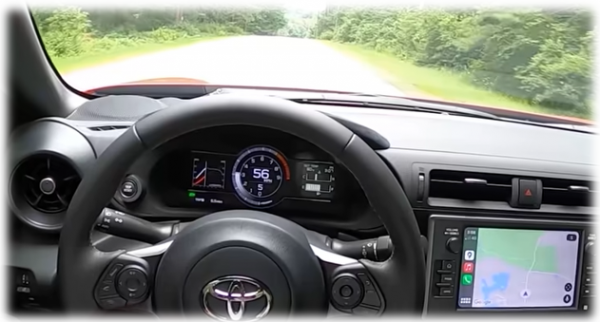The importance of the battery increases with each generation, as contemporary automobiles are increasingly dependent on electronics.
So it’s no surprise that an outdated battery or a malfunctioning charging mechanism can lead to other problems that seem disconnected at first. This includes engine misfires, an infotainment system, various error codes, and warning lights. However, what about Limp mode?
In a nutshell, the answer to the question of whether a bad battery can trigger limp limp mode is yes. The ECU (Engine Control Unit) and other engine parts are very sensitive to voltage fluctuations. Also, since every sensor in your vehicle relies on a constant 12-volt power source from the battery, any variation in that source can lead to error codes, warning lights, and perhaps a limp home mode.
What causes Limp mode with a bad battery?
Contrary to common assumption, a faulty battery will cause voltage spikes and low voltage. And the two, taken together, are more than enough to create problems in a contemporary vehicle. The fundamental problem is that the sensors do not receive a constant supply of power, which leads to them shutting down or sending inaccurate data to the ECU.
But even more important, the communication between various control units requires a constant voltage. And when that voltage is absent, communication is cut off, leaving the ECU practically blind. Now the ECU will go into limp mode as these modules can completely damage an engine and all electrical components.
Also, the voltage spikes are enough to damage the infotainment system, sensors, control modules, and other devices. Because of this, sometimes just a voltage spike is enough to initiate limo mode. The battery normally lasts 3-4 years, so if your battery is that old, it’s probably time to buy a new one.
However, doing a trouble code check on your vehicle is a good idea to make sure nothing else is to blame for your limp home mode issue. You probably won’t get any error codes or a ton of them, all disconnected, if the problem is the battery. Finally, you can use a multimeter to test your battery. That is how.
How to test a battery
Set your multimeter to the 12 volt DC setting.
Have someone get into the car and turn the key.
Place the rear probe on the negative battery terminal and the red probe on the positive. Before starting the engine, the multimeter should read between 12 and 12.5 volts.
Then have your helper crank the engine while you examine the multimeter.
When the engine is starting, the voltage should not go below 10 volts, or in the worst case, 9.5 volts. If it does, the battery is faulty; if not, the problem is caused by another factor.
What else can affect battery voltage?
If the battery turns out to be working properly, your charging mechanism may be in trouble. But first, you have to keep in mind that the ECU has to be configured in current cars to recognize a new battery. So if you recently replaced the battery but the technician didn’t, the battery is probably overcharged.
Also, your new battery won’t last as long as it should and given enough time the battery voltage can rise to the point where it goes into limp mode.
It is necessary to check your alternator if you are sure that this is not the case. Check specifically to see if the battery is overcharged as this would indicate a bad voltage regulator. Also, the alternator may be discharging the battery, making it difficult to start the engine and causing it to stall frequently. But if such signs indicate a problem with the charging system, it would be a problem.
And finally, if you add too many aftermarket power auxiliaries, the battery voltage will fluctuate and plummet. This includes things like speakers, amplification, light bars, and winches. You can check the battery voltage before and after turning them on to make sure you’re not overloading the system. Here’s how to determine if an alternator is charging too much or too little.
How to test an alternator
Set 12 volts DC on your multimeter.
Starting the engine
Place the red sensor on the positive end of the battery and the black sensor on the negative end.
The multimeter should register between 14.2 and 14.7 volts with the engine running and all auxiliaries off.
Now turn on as many auxiliary devices as you can, including seat warmers, radio, lights, and heater to full. When the voltage drops below 12.7, the battery is probably not fully charged.
Now turn off all accessories and rev the engine. The voltage should increase as the engine accelerates and stops around 14.7 to 14.8. The alternator is overloading if the voltage rises and goes without stopping.
What is emergency mode?
In essence, limp mode is an ECU programmed self-preservation mode. The ECU will reduce power and restrict certain functions if it detects a fault that could damage the engine. For example, the ECU could detect a misalignment between the camshafts and the crankshaft, which often occurs when the timing chain or belt skips a tooth.
Now each car has a unique limp mode. On certain cars, the top speed is limited to 30 mph, while on others it may be 40 mph. Additionally, you can prohibit automatic transmissions from shifting to higher gears and restrict engine speed to 2,000 or 2,500 RPM. Also, it may not be possible to use the air conditioner, radio and other electronic devices in emergency mode.
Emergency mode should never be ignored, even if a bad battery could cause it. For this reason, you should constantly check for fault codes to determine if there are any hidden issues. In addition, we strongly recommend that you have your car checked as soon as possible.
How to disable Limp mode
The first step to disabling limp mode is to resolve the underlying issue. If not, there’s no way to turn it off, and you shouldn’t go anyway. Most of the time, limp mode will automatically deactivate once you have resolved the issue. However, you need an OBD2 scanner if that doesn’t happen.
To get the car out of limp mode, you need to clear all the trouble codes with the OBD2 scanner. The battery can also be disconnected and left for 10-15 minutes, although this will only work on older vehicles. Still, as soon as you restart the engine and resume limp mode, the ECU will detect the problem.
How long can I drive in Limp mode?
In emergency mode, you can keep driving forever. You can continue driving for as long as you like in limp mode if you agree to a 30 to 40 mph speed restriction. However, limp mode often denotes a major gearbox or engine problem, which could end your ride early.
Limp leads to engine overheating?
No, the engine does not get too hot while in limp mode. However, the purpose of limp mode is to prevent the engine from overheating and possibly self-destructing due to a fundamental problem.
Can Limp mode be removed?
Yes, the condition of lameness can sometimes come and go; however, the reason why will vary. However, it is crucial to realize that limp mode is turned off when the ECU detects no problems. So if a particular component has an intermittent failure, it will come and go.
Will Limp mode occur due to low oil level?
No, limp mode is not activated by low oil level. This is because the low oil level does not cause any additional problems until it is too late. Also, every car has a low oil warning light; If you do not add oil when activated, you are responsible for the damage.
Can a MAF sensor drive limp limp mode?
Although its symptoms partly mimic limp limp mode, a malfunctioning MAF sensor does not cause it. The ECU will send an out of line MAF sensor if it is malfunctioning, reporting bad data to the ECU, or simply not clean. When it occurs, the engine often fails to rev above 2,000–2,500 RPM, significantly reducing its power output.
How do I know if I need to replace my car battery?
Use this tutorial and a multimeter to test your vehicle’s battery to see if it needs to be replaced. However, you could see signs of stalling, weak headlights, corroded terminals, and even an inability for the engine to start. It’s also helpful to know that a vehicle battery typically lasts 3-4 years.
How long can a bad battery keep a car running?
A near-failure battery in a vehicle often lasts one to three months before failing. Exactly how long depends on the vehicle you drive; During that time, you will probably need to jump start the engine at least a few times.
Do car batteries fail quickly?
No, car batteries don’t usually die completely. The engine won’t start as fast as it used to, which is the first thing you’ll notice. Plus, you’ll experience engine stalls, dim lighting, and infotainment issues. Last but not least, if the engine won’t start but starts on jump leads and continues to run normally, the battery is clearly past its peak.
Conclusion
Once all is said and done, the most important thing to understand is just how crucial the battery and charging system are to a modern car. One module controls just about everything in a contemporary car, and for those modules to work effectively, they must interact with each other. Also, since a bad battery does not provide a constant voltage, the limp mode will kick in immediately.
However, you should first scan your car for trouble codes to make sure it’s nothing else, as limp mode often indicates a major problem. Alternatively, you can follow our instructions to test the battery with a multimeter, and if everything is in order, you can be sure that the battery is not the source of the limp mode.




